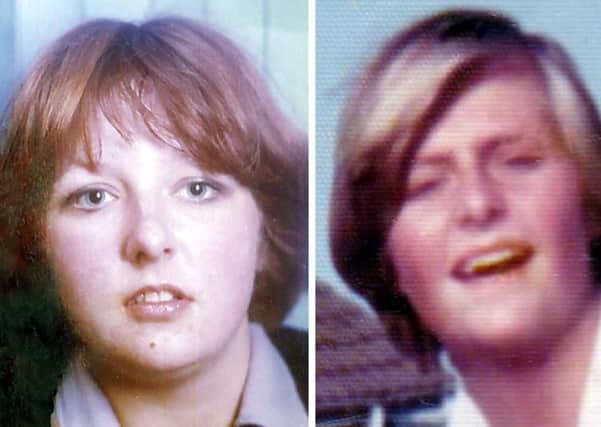World’s End Murder trial prosecution closes case


Lord Advocate Frank Mulholland told the jury that the prosecution had concluded its case and there were no amendments to the charges in the trial of Angus Sinclair.
Sinclair, 69, denies raping and murdering 17-year-olds Helen Scott and Christine Eadie, who were last seen at the World’s End pub in Edinburgh on October 15 1977.
Advertisement
Hide AdAdvertisement
Hide AdTheir bodies were discovered in East Lothian the following day.
Sinclair is accused of carrying out the attacks with his late brother-in-law Gordon Hamilton.
The trial at the High Court in Livingston, West Lothian, entered its fifth week today, with forensic scientist Andrew Davidson completing his evidence.
Jurors have heard how Mr Davidson, 46, carried out DNA analysis on various items of clothing found on the bodies of the girls, including tights and belts used as ligatures.
Advertisement
Hide AdAdvertisement
Hide AdMr Davidson, who works for the Chorley-based organisation Cellmark, co-authored a report on the findings with his wife, forensic scientist Geraldine Davidson.
During cross-examination from defence QC Ian Duguid today, he was asked about a ligature taken from Helen’s wrists which came from the belt of her coat but which his results had shown had a predominance of Christine’s DNA.
The witness was asked if the DNA could have been left at any stage during the course of the evening.
He said the amount of DNA and the way it was distributed “along the entire length” was not fitting with a “social contact”.
Advertisement
Hide AdAdvertisement
Hide AdIt could be because of a secondary transfer but she would have needed to have a significant amount of Christine’s DNA on her hands, he said.
During re-examination by Mr Mulholland, the witness was asked if Christine could have been told to tie the belt.
Mr Davidson said it could have been from “tying or trying to untie” the belt.
He was also asked about evidence he gave last week in which he said the samples dating from 1977 were preserved in a “very good condition” when he came to analyse them.
Advertisement
Hide AdAdvertisement
Hide AdUnder questioning today, he acknowledged the samples were “low level” and were treated with “caution”.
The lawyer then asked him about the buckle section of a belt which the scientist had earlier told the court his findings showed Angus Sinclair was a major contributor to the DNA.
Mr Duguid said: “I presume you do not know whether or not somebody else transferred Angus Sinclair’s DNA on the belt section?”
“That’s right, yes,” the witness replied.
Asked if it had ever occurred to him that somebody else had transferred the DNA, he said: “It’s a possibility.”
Advertisement
Hide AdAdvertisement
Hide AdThe court has already heard how Sinclair claims he and Hamilton had consensual sexual intercourse with both girls in a caravanette in Holyrood Park, Edinburgh, before he went to East Lothian, where he left the girls unharmed.
Sinclair has lodged three special defences - of consent to sexual intercourse, alibi and incrimination, blaming Hamilton.
After the prosecution rested its case, Mr Duguid said there were “at least three” defence witnesses and said he needed time to consult with the accused.
The trial, before Lord Matthews, continues tomorrow.